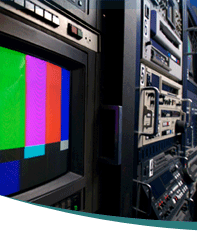





Audio Tips At MWP Transcripts, we’re skilled at transcribing even the most difficult–to–hear recordings. But unclear recordings take more time—and even the best transcriptionists can only glean so much from a bad recording. So when it comes to capturing every detail, a clear, well-documented recording can make all the difference. Follow the tips below to help ensure complete accuracy on your next project—and to save precious time, money, and energy. Hire a recording professional: The best way to get the quality you need is to hire a professional with the equipment and technical knowledge to manage every detail. Be sure to check qualifications and provide details such as room size, meeting format, and number of speakers. This will help to ensure that the audio/visual (A/V) technician arrives with the right equipment and necessary set–up time to make your recording a success. Call ahead to your hotel or meeting facility: Facilities often provide audio/visual services. But it’s up to you to make sure that they meet your unique needs. Call ahead and ask to speak to the A/V technician about equipment and set–up. And always provide details such as the meeting format and number of speakers to help the facility make your recording—and your event—run smoothly. Test your equipment: Whether you’re working with a professional service or recording your own interview or event, always test your equipment before recording begins and again a few minutes in. Listen for clear sound and proper volume as well as any interfering feedback or background noise. Adjust your equipment as needed—and always keep a close eye on it during the recording to ensure continued functionality. Keep the recorder or microphone close to the speaker: For one–subject interviews, make sure the recorder is closer to your interviewee than it is to you. For focus groups or roundtable discussions, invest in an “omni–directional” microphone. Low–cost options are available at retail electronic stores. When it comes to presentations, ask an A/V technician to make a tape directly from the microphone. Use separate microphones to record audience member questions and comments. It’s often useful to have volunteers in the audience to make sure everyone speaks directly into the microphone. Keep background noise to a minimum: Choose carefully when finding a location for your recording. Quiet, insulated rooms are best to reduce outside distractions such as cars, passersby, or nearby construction. Also be sure to minimize coughing, paper shuffling, and audience chatter—all of which can easily drown out your speaker. Facilitate your recording: Before the event begins, announce and spell out each speaker’s name and title. Ask speakers to identify themselves at the beginning of the interview or event and each time they speak. It’s also helpful to provide us with any accompanying presentation materials or terminology.
|